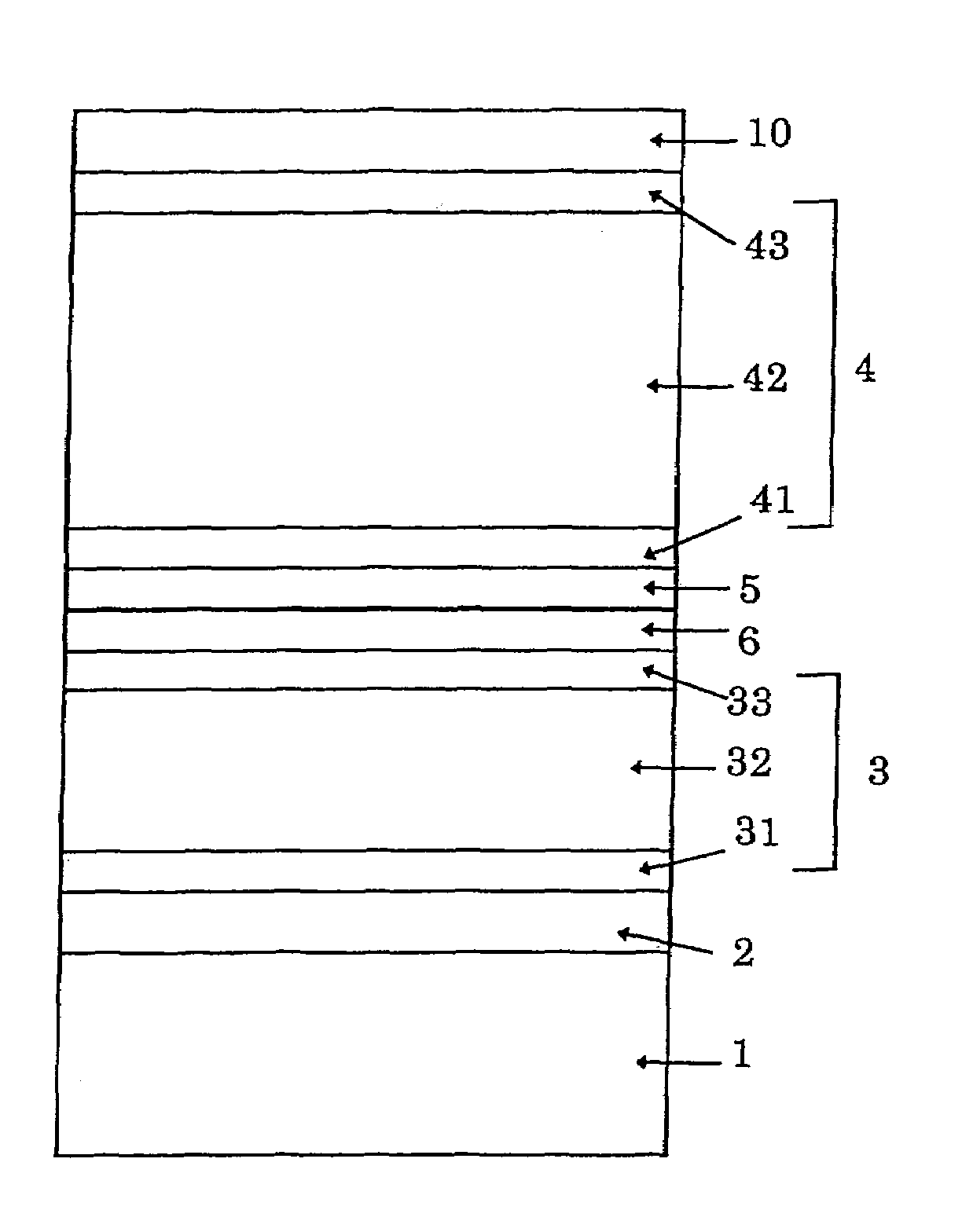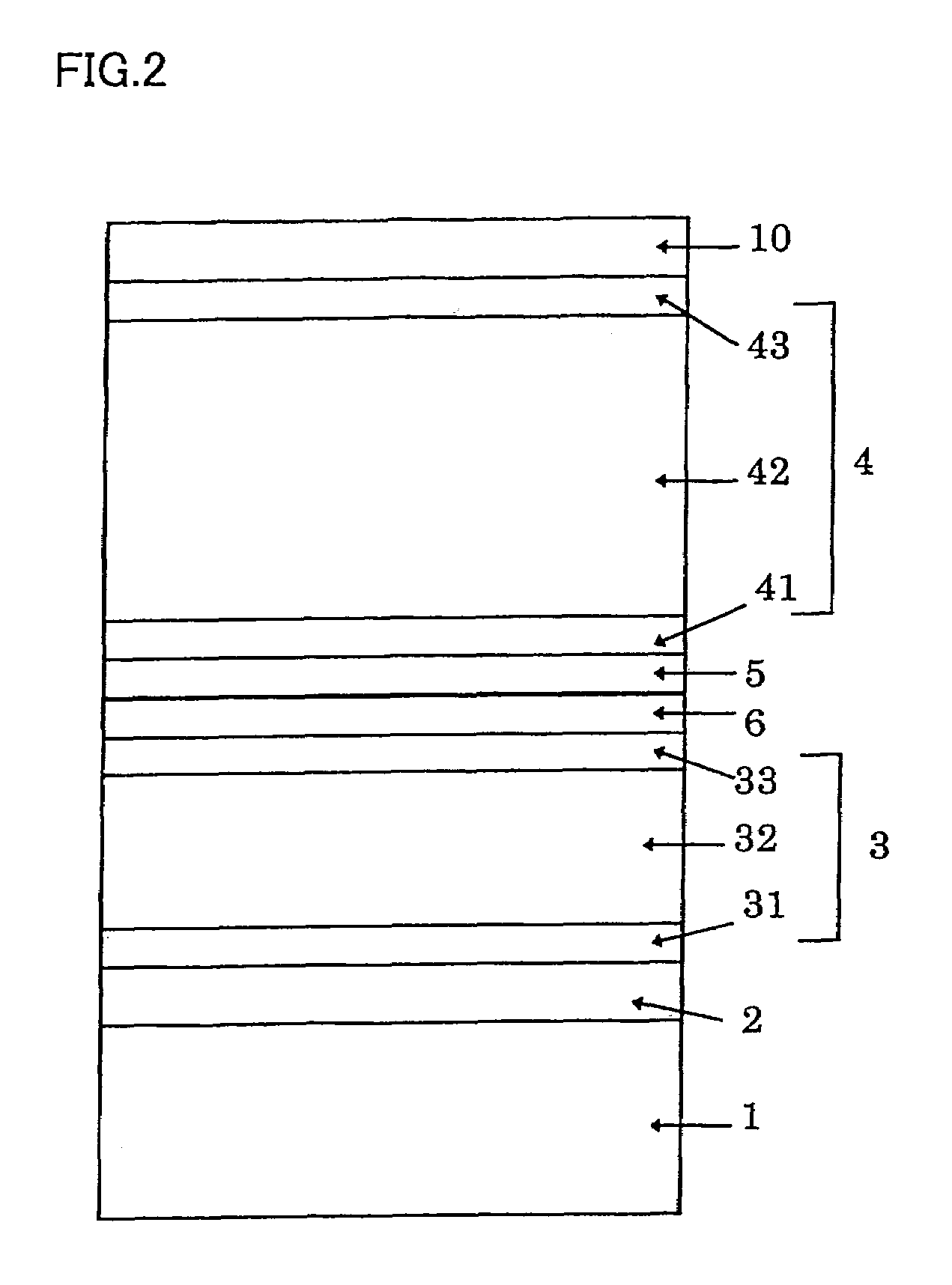Method for fabricating tandem thin film photoelectric converter
a technology of tandem-type and photoelectric conversion, which is applied in the manufacture of final products, basic electric elements, climate sustainability, etc., can solve the problems of light absorbed by these inactive layers, the characteristics of the resulting tandem-type thin film photoelectric conversion device deteriorate as compared to that of a tandem-type thin film photoelectric conversion device, etc., to achieve the effect of minimizing the reduction of photoelectric conversion efficiency
- Summary
- Abstract
- Description
- Claims
- Application Information
AI Technical Summary
Benefits of technology
Problems solved by technology
Method used
Image
Examples
example 1
[0043]Example 1 corresponds to a method of manufacturing a thin film solar cell in FIG. 2. First of all, a transparent electrode layer 2 containing tin oxide as a main component was formed on a transparent glass substrate 1. Then, the laminate including the substrate 1 and the electrode layer 2 was introduced in a first plasma CVD apparatus, and a p-type amorphous silicon carbide layer 31, an i-type amorphous silicon photoelectric conversion layer 32 and an n-type microcrystalline silicon layer 33 included in an amorphous silicon unit 3 were formed in the thickness of 8 nm, 300 nm and 10 nm, respectively, at a predetermined substrate temperature. After the formation of the n-type layer 33, introduction of phosphine as doping gas was shut off in the same reaction chamber, and a non-doped intermediate layer 6 was formed in the thickness of 4 nm.
[0044]After that, the laminate was transferred to an unload chamber of the first plasma CVD apparatus, and the laminate was taken out to the a...
example 2
[0054]Example 2 was different from Example 1 only in that the thickness of the n-type microcrystalline silicon layer 33 in the amorphous silicon unit 3 was increased from 10 nm to 12 nm, and thereafter the laminate was taken out from the first plasma CVD apparatus to the air without formation of the non-doped intermediate layer 6. In other words, Example 2 corresponds to a method of manufacturing a hybrid thin film solar cell in FIG. 1.
REFERENCE EXAMPLE
[0055]Reference Example was different from Example 2 only in that the thickness of the n-type microcrystalline silicon layer 33 was increased to 30 nm and the crystalline silicon unit 4 was subsequently formed without exposure of the laminate to the air and also without formation of the n-type intermediate layer 5.
[0056]As shown in Table 2, it is understood that the decreases in the average photoelectric conversion efficiency of the solar cells according to both of Example 1 and Example 2 fall within the range of less than 2% in compa...
PUM
 Login to View More
Login to View More Abstract
Description
Claims
Application Information
 Login to View More
Login to View More - R&D
- Intellectual Property
- Life Sciences
- Materials
- Tech Scout
- Unparalleled Data Quality
- Higher Quality Content
- 60% Fewer Hallucinations
Browse by: Latest US Patents, China's latest patents, Technical Efficacy Thesaurus, Application Domain, Technology Topic, Popular Technical Reports.
© 2025 PatSnap. All rights reserved.Legal|Privacy policy|Modern Slavery Act Transparency Statement|Sitemap|About US| Contact US: help@patsnap.com



